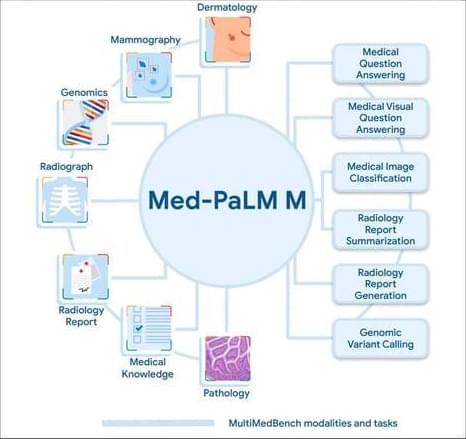The European Space Agency’s Euclid telescope launched on 1 July, and now it has delivered its first stunning pictures of stars and galaxies across the cosmos.
By Leah Crane

The European Space Agency’s Euclid telescope launched on 1 July, and now it has delivered its first stunning pictures of stars and galaxies across the cosmos.
By Leah Crane
Rothschild calls this “living tech,” which starts with the power of the cell. Microscopic organisms will produce silk, wool, latex, silica, and other materials. We’ll send digital information to biofactories on Mars through DNA sequences. We’ll generate and store power using living organisms. Rothschild said one of her students incorporated silver atoms into plant DNA to make an electrical wire.
“Once you think of life as technology,” Rothschild said, “you’ve got the solution.”
Humans have many practical reasons to become multi-planetary. But the mission shouldn’t represent merely a life insurance policy for the species. We’re still explorers and visionaries, so let’s harness that ambition for an aspirational purpose.



Arms reduction is a noble goal, but it’s not one being pursued by some of the worst regimes in the world. The late George Shultz, former secretary of state for Ronald Reagan and a Cold Warrior, once advised against proliferating nuclear weapons. He quipped that “proliferation begets proliferation,” which the arms control lobby has used for decades to prevent the U.S. government from developing nukes.


Sodium-ion (Na-ion) batteries and solid-state batteries have both been in the news recently. Why? Because the need for battery storage is growing rapidly as the global economy seeks carbon-based energy alternatives in pursuit of the goal to achieve net-zero emissions by the mid-century.
Na-ion Battery News
In April I wrote about BYD, a Chinese electric vehicle (EV) manufacturer, that is using sodium-ion (Na-ion) battery packs instead of lithium-ion (Li-ion) in some of its models. In its latest report, IDTechEx, out of Cambridge in the United Kingdom, states that although Na-ion batteries are not the answer to all battery-power applications, they do provide a complimentary addition to battery packs used not just in EVs but also for backup power within utilities and factories.

SpaceX launched the world’s heaviest commercial communications satellite atop a Falcon Heavy rocket on Friday. The triple-core rocket lifted off from Kennedy Space Center’s pad 39A with the Jupiter 3/EchoStar 24 satellite at 11:04 p.m. EDT (0304 UTC Saturday).
The successful launch came after a scrub on Wednesday and a 48-hour delay to replace a stuck liquid oxygen valve on the rocket’s port-side booster. After a week of stormy conditions on the Florida Space Coast the weather improved and the rocket lifted off in calm conditions, with just a thin layer of cloud in the sky.
It was the seventh mission for the Falcon Heavy and the third flight of the rocket this year. The Falcon Heavy’s twin side boosters, which have made two previous flights, returned to SpaceX’s Landing Zones 1 & 2 punching through a thin layer of cloud and announcing their arrival with sonic booms. The rocket’s core stage required all its capacity to loft the giant satellite into a geostationary transfer orbit and was not recovered.

Say hello to ionocaloric cooling. It’s a new way to lower temperatures with the potential to replace existing methods of chilling things with a process that is safer and better for the planet.
Typical refrigeration systems transport heat away from a space via a gas that cools as it expands some distance away. As effective as this process is, some of the choice gases we use are particularly unfriendly to the environment.
There is, however, more than one way a substance can be forced to absorb and shed heat energy.

In a high-tech laboratory, somewhere in San Francisco, sits a comma-shaped piece of metal that aims to change how the world sees the weather. The structure dominates the room. The horizontal part softly curves upwards until it’s taller than a person, with ridges that stretch from top to bottom. You’d be forgiven for thinking it’s a piece of modern art.
In fact, it is art, but it’s also much more than that. It’s an AI-powered, data-processing powerhouse from a startup called Atmo, and it could democratize weather forecasting, putting every country on a level meteorological playing field for the first time.